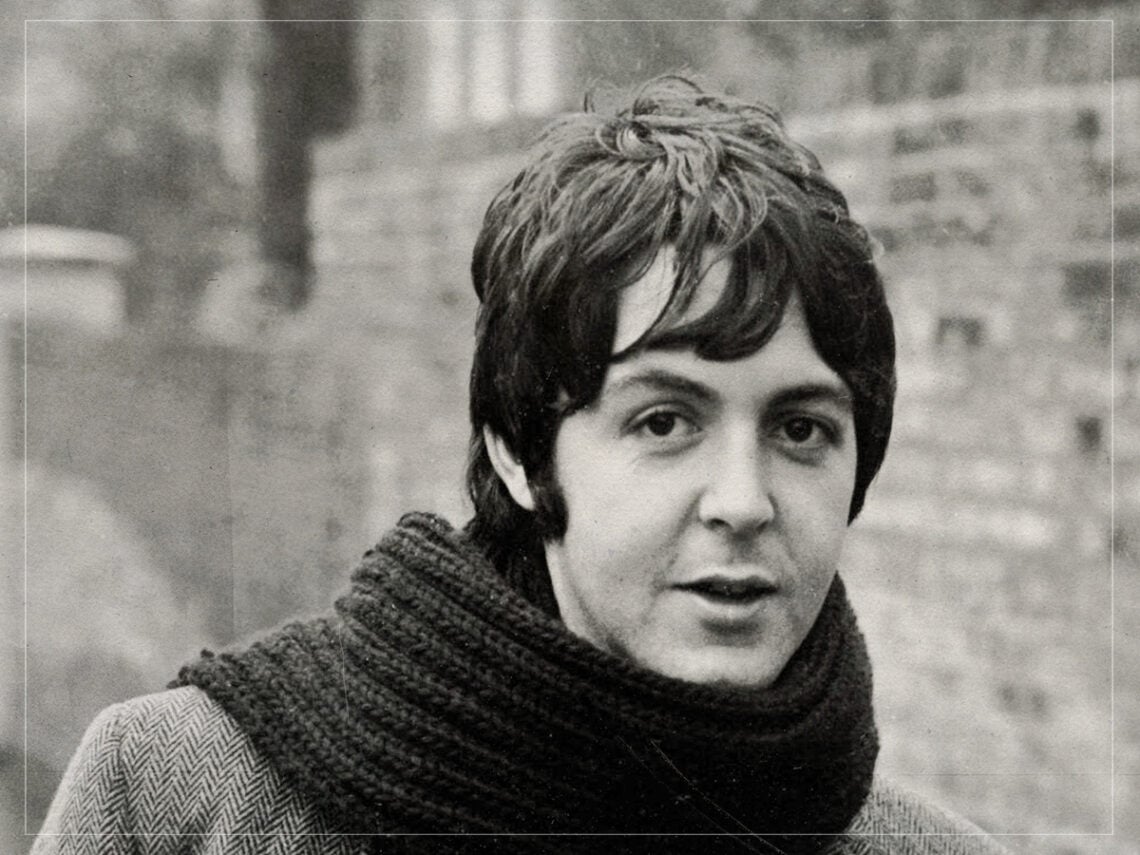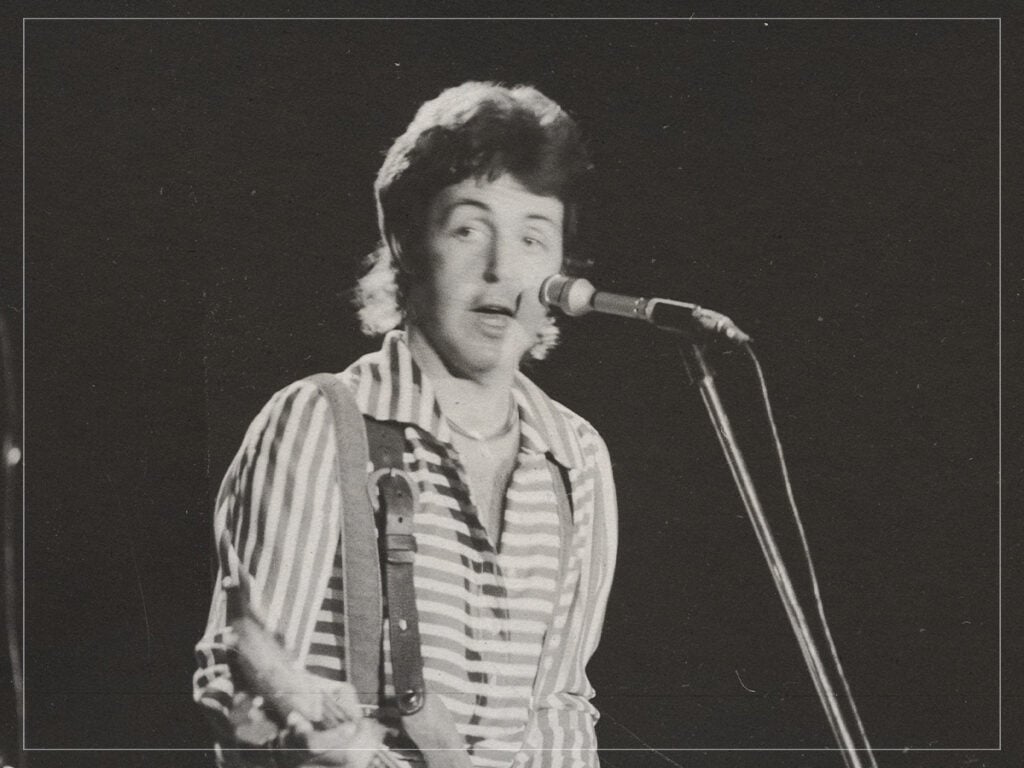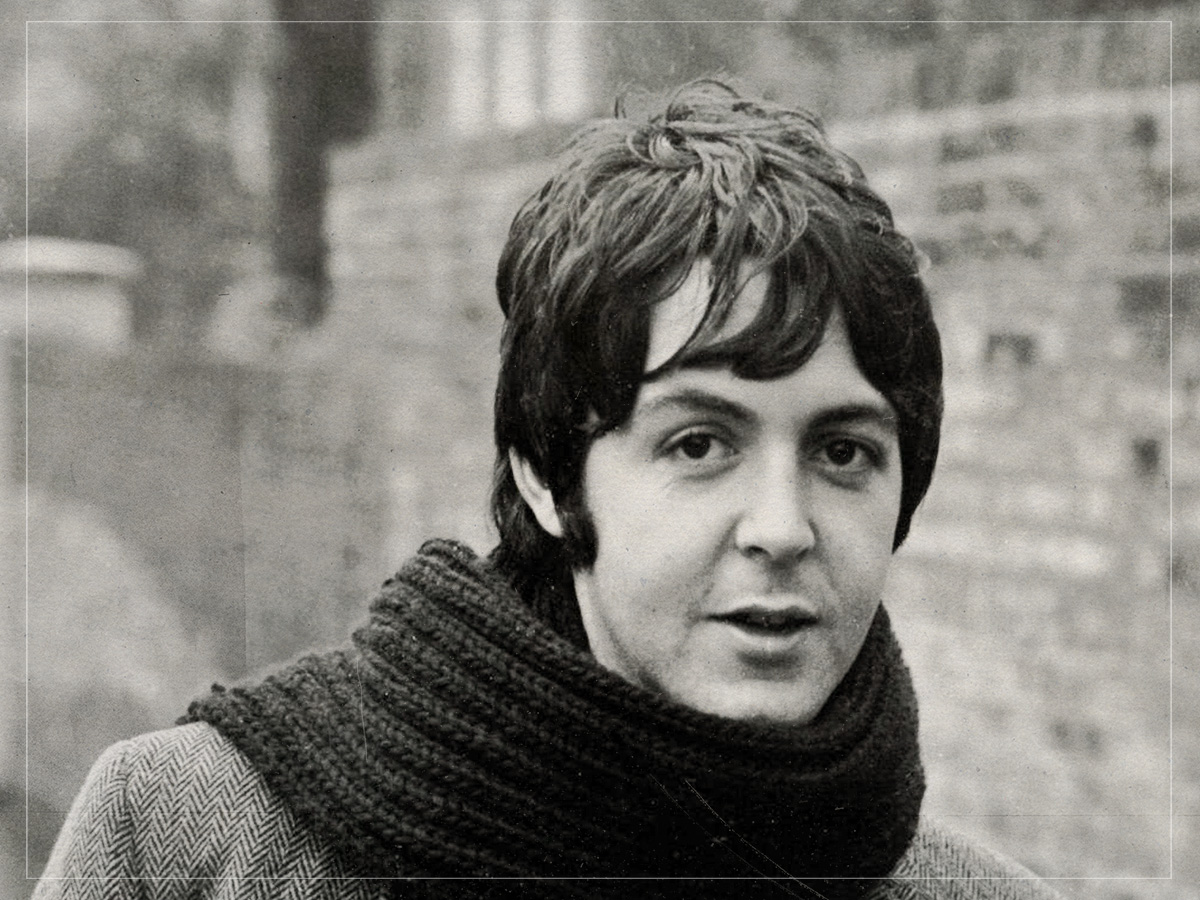
(Credits: Far Out / Alamy)
Wed 4 June 2025 18:51, UK
There’s an argument to be made that Paul McCartney’s bass is one of the most-heard instruments in history. After all, according to reports, The Beatles have sold over 1.6 billion singles in the United States alone, along with 177 million albums. Globally, their album sales have reached an astonishing 600 million.
If those figures hadn’t been ratified ten times over, then they wouldn’t be believed. Especially considering that the population on Earth was only 3.1billion when the Fab Four first emerged. The sheer size of reach McCartney achieved doesn’t even incorporate the millions of fans who have witnessed him live or purchased his solo records.
With numbers like that to his name, it is simply impossible for Paul McCartney not to have influenced every bassist that has followed, at the very least, in some far-removed, nebulous sense, the sound of The Beatles will have shaped them. Their impact was so seismic that you were either inspired by them or inspired to not be like them, but you certainly couldn’t ignore them.
His melodic technique has been cited by countless players as a pivotal milestone in the evolution of the instrument, giving rise to artists such as John Paul Jones and Rush’s Geddy Lee. His trademark trick was that his stunning complexity only became apparent when you isolated the bass part. He flowed with the song so rhythmically that some of his acrobatics are barely noticed when you listen casually. However, even heroes have a hero, and Paul McCartney is no different.
So, who is Paul McCartney’s favourite bassist?
During a Q&A with fans, Macca was asked the instrumental question: “Who was the biggest influence upon your bass playing?” to which he responded with a seemingly casual nonchalance: “The biggest influence on my bass playing was James Jamerson, who played on many of my favourite Motown releases”.
For those born this side of the century, it’s hard to quantify just how impactful Jamerson’s four-string was. The rhythm behind some of the greatest pop hits during the most impressive explosion of pop records of all time, his place in the pantheon of bass players, is confirmed even without the many admirers he has since influenced.
Sir Paul McCartney is certainly not alone in lauding the heralded Motown man of the four-string. Dougie Payne, who plays bass in Travis, exclusively told Far Out, “I saw the movie Standing In The Shadows of Motown and became utterly obsessed with [bass player] James Jamerson. I started obsessively listening to his basslines”.
He adds, “Then I heard a story about how he was playing on stage in a club once and Marvin Gaye arrived and physically dragged him off to come and play on his record in the studio. Jamerson was so steaming drunk that he played all the basslines lying down. I’ve tried doing it myself,” Dougie joked, “And it’s just about impossible.”
 (Credits: Far Out / Kurt Schollenberger / ETH Library)
(Credits: Far Out / Kurt Schollenberger / ETH Library)
This laidback style (not in the literal sense of lying down) and heavy Peter Hook-esque notion that the bass should be front and centre at the party and not just holding the drinks in the background is something that has led Jamerson to cult hero status. Brimming with style, he brought a sense of bravado to the instrument. It waltzed plenty of Motown tracks to the top of the charts and ushered in an era of cool for the newfangled electric bass.
Although he, along with fellow Motown legend Carol Kaye, are championed as two of the greatest bass players of all time by those in the industry, such is the nature of being a session musician for the eponymous hitmaking label, they haven’t received the wider credit that they deserve when considering music at large.
In an interview with Tony Bacon, first published on Reverb, McCartney was more than happy to reveal just how much the cult figure influenced his style. “[Bass playing] became a bit more skilful, yeah,” he said. “I wouldn’t personally credit myself, but thanks for that. But part of it, I think James Jamerson, him and me, I’d share the credit there. I was nicking a lot off him.”
Later adding that, as was the case for many other fans, Jamerson was a faceless sound to him for a lot of years. “James Jamerson became just my hero, really. I didn’t actually know his name until quite recently. James was very melodic, and that got me more interested.”
The other bassist from whom McCartney was inspired was Brian Wilson. “Actually, he and Brian Wilson were my two biggest influences,” he added. “James just because he was so good and melodic. Brian because he went to very unusual places. Brian would use, if you were playing in C, he might stay on the G a lot just to hold it all back, and I started to realize the power you had within the band.”
With a triumvirate of Brian Wilson, James Jamerson and Paul McCartney himself in the mix, you’ve just about encapsulated the sound of the 1960s and some of the most seminal basslines that have ever been laid down, resplendent with breeziness and innovation in equal measure. And they have the songs to prove it. Sure, the likes of Jaco Pastorius might compete when it comes to technical ability, but how many number ones did he play on?
These three men, with their unwillingness to let the bass guitar fall into the background noise of the guitarist’s fuzz or be overshadowed by vocal melody, not only gave the world a plethora of gigantic hits but bass players everywhere a reason to be cheerful. They are tied by a style that overshadows its own complexity with the simple joy of playing.
You can check out James Jamerson’s work on the Jackson 5’s ‘Darling Dear’ below; it is undoubtedly one of the prettiest basslines that vinyl has ever struggled to contain in its grooves, with a fluency and intonation rarely heard today. It’s slicker than a penguin’s back and smoother than a hot-butter silk nightgown.
Related Topics
Subscribe To The Far Out Newsletter
